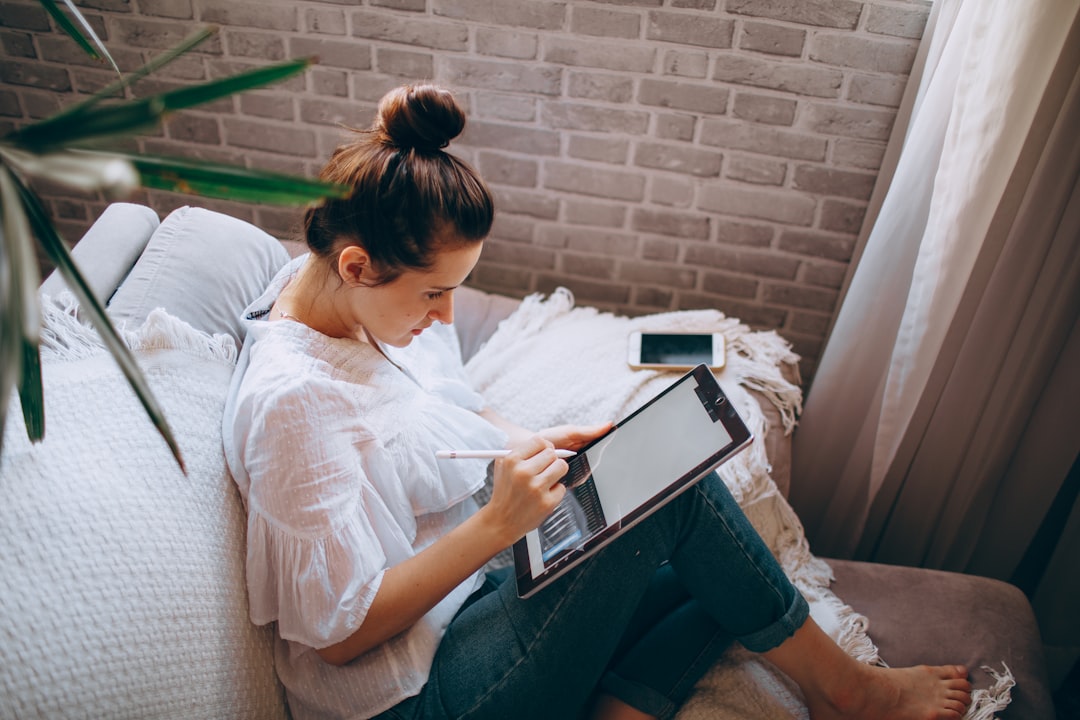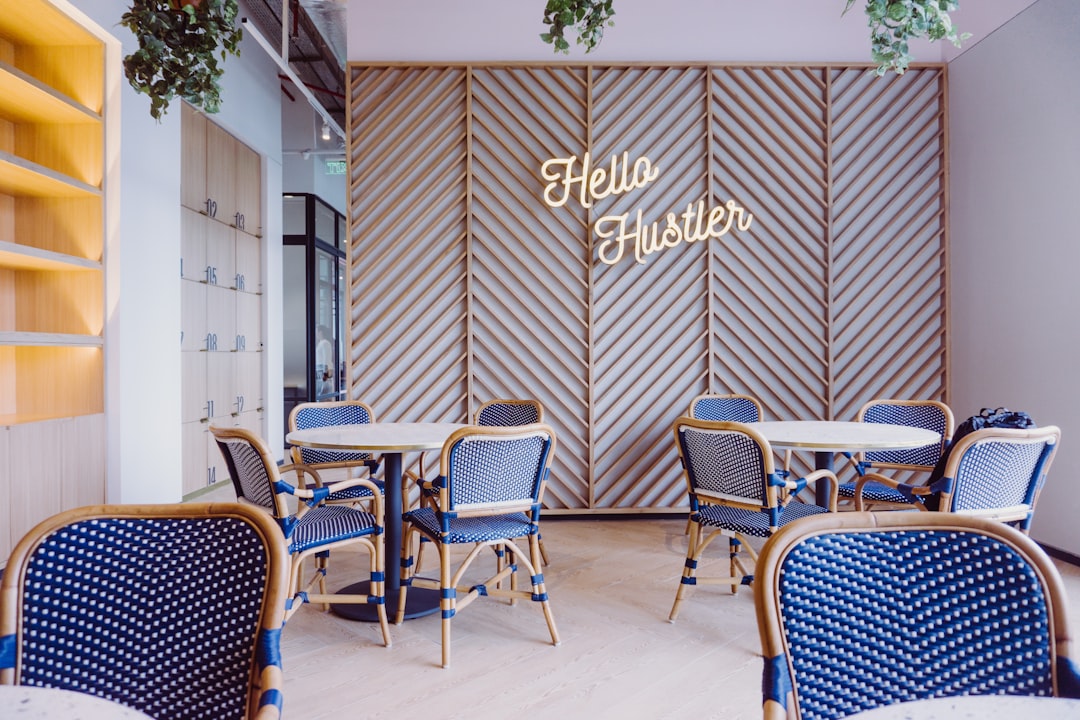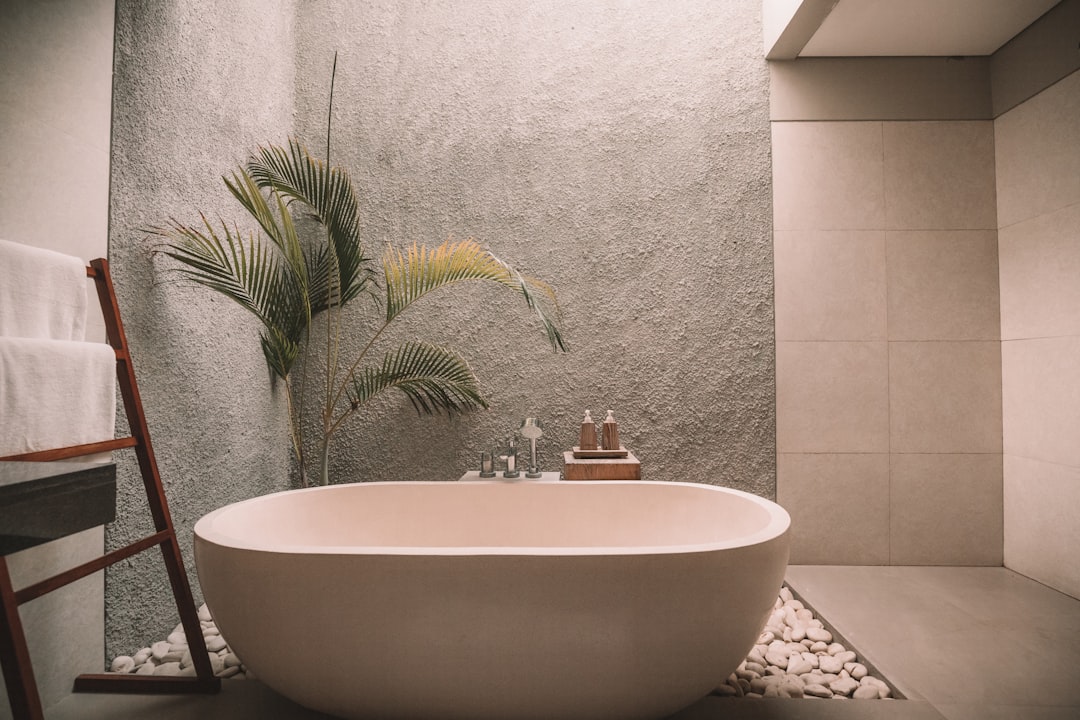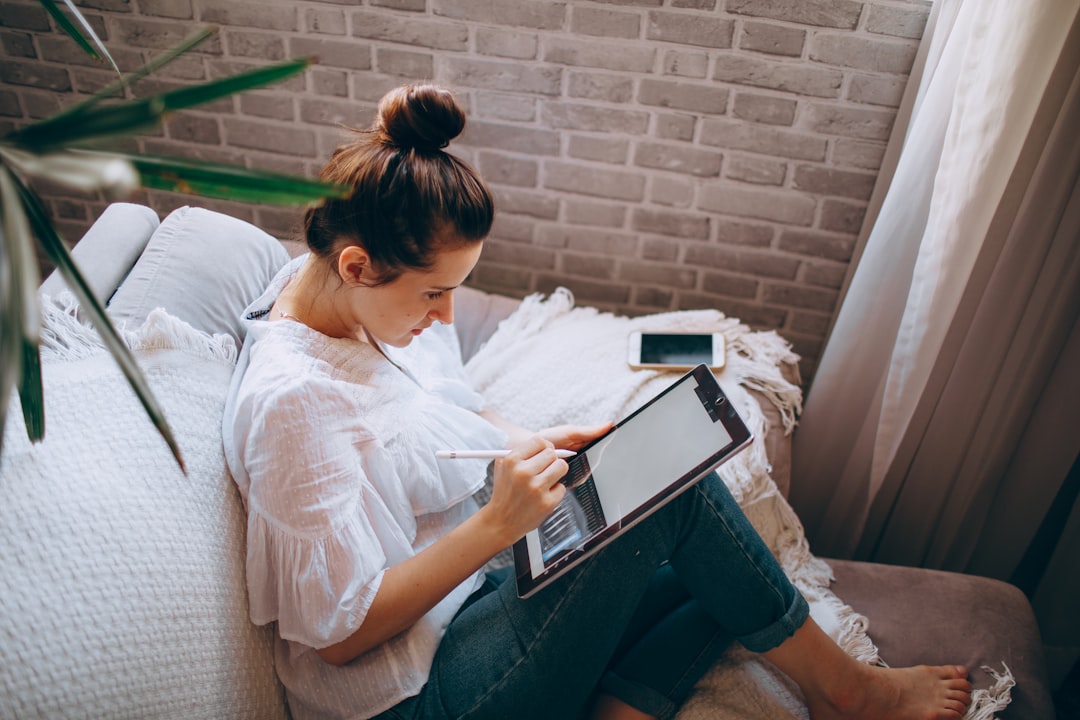Thriving on the Move Mental Wellness for Digital Nomads

Introduction
Living a location‑independent lifestyle can feel like a perpetual adventure. The freedom to choose a new city every few weeks, to work from a beachside café or a mountain lodge, is a dream that many digital nomads pursue. Yet behind the Instagram‑ready sunsets and the excitement of new cultures lies a set of mental health challenges that are often overlooked. The constant change of environment, the blurred line between work and leisure, and the distance from familiar support networks can create stress, anxiety, and loneliness.
This article explores how digital nomads can not only survive but thrive mentally while on the move. It offers a deep dive into the psychological dynamics of nomadic life, practical strategies for daily mental upkeep, and ways to build a resilient community wherever the road leads. By the end, you will have a toolbox of habits, mindsets, and resources that support a healthy, balanced mind while you explore the world.
Understanding the Unique Mental Landscape
The paradox of freedom and uncertainty
Freedom is the cornerstone of the nomadic ideal. Choosing when and where to work is empowering, but it also introduces a high degree of uncertainty. Visa expirations, fluctuating internet reliability, and the need to constantly adapt to new cultural norms can generate a background level of stress. Over time, this low‑grade anxiety can accumulate, eroding mental stamina.
The blurring of work and leisure
When the office is a co‑working space in a foreign city, the boundaries between “work time” and “exploration time” often dissolve. Without a clear physical separation, the brain can struggle to switch off, leading to overwork, burnout, and difficulty enjoying the travel experiences that motivated the nomadic choice in the first place.
Social isolation and the “digital‑only” network
Leaving behind family, friends, and familiar community structures can feel liberating, yet it also removes the built‑in emotional safety net that many people rely on. While technology enables constant contact, virtual interactions rarely replace the depth of in‑person support, and the nomad may end up feeling isolated despite a busy online presence.
Cultural fatigue
Immersing yourself in new languages, customs, and social expectations is enriching, but it can also be mentally exhausting. The effort required to interpret social cues, navigate bureaucratic processes, and adapt to different communication styles adds an invisible load that can contribute to fatigue and irritability.
Foundations of Mental Wellness
Prioritising mental health as a core value
Just as you plan your itinerary and budget, place mental wellness at the top of your planning hierarchy. Treat it as a non‑negotiable line item in your travel checklist. When mental health is acknowledged as a primary objective, you are more likely to allocate time, money, and energy toward practices that sustain it.
Self‑awareness as the compass
Regularly checking in with your emotional state gives you the data you need to adjust course. Simple self‑assessment questions—“How am I feeling right now?” “What thoughts are recurring?” “Is my energy level high or low?”—can reveal patterns before they become crises.
Building a personal mental health framework
Create a flexible framework that includes:
- Daily rituals – activities that ground you each morning and evening.
- Weekly reflections – a brief review of successes, challenges, and adjustments.
- Monthly goals – mental health objectives that align with your travel plans, such as learning a new language phrase each month or joining a local hobby group.
Having a structured yet adaptable system gives you direction without stifling spontaneity.
Daily Routines that Support the Mind
Morning grounding practices
Start each day with a ritual that signals to your brain that it is time to be present. Options include:
- A five‑minute breath awareness exercise.
- Journaling three bullet points about gratitude and intentions.
- Light stretching or yoga to release physical tension.
These practices anchor you in the present moment and set a calm tone for the day ahead.
Structured work blocks
Even when the backdrop changes, keep a consistent work rhythm. Use the Pomodoro technique or a similar time‑boxing method: 25 minutes of focused work followed by a five‑minute break. After four cycles, take a longer break of 15‑30 minutes. This rhythm helps the brain maintain concentration and prevents the creep of endless scrolling or overwork.
Scheduled “offline” periods
Deliberately turn off notifications and disconnect from devices for a set period each day. Use this time to explore the city, read a physical book, or engage in a hobby. Knowing you have protected offline windows reduces the anxiety of constant connectivity.
Evening wind‑down rituals
Close the day with a routine that signals to your nervous system that it is time to relax. This could involve:
- A warm shower or bath.
- A short meditation focusing on body scanning.
- Writing down three reflections on what went well and what you learned.
Avoid screens at least 30 minutes before bedtime to improve sleep quality.
Nurturing Social Connection on the Road
Intentional meet‑ups
Instead of waiting for friendships to happen organically, create opportunities to meet people. Attend co‑working events, language exchange nights, or local workshops. Even a brief conversation over coffee can evolve into a supportive connection over time.
Joining nomad‑focused communities
Many cities host digital nomad meet‑ups, Facebook groups, or Slack channels. Participate regularly, introduce yourself, and share a little about your journey. Consistent engagement builds a sense of belonging that transcends borders.
Maintaining long‑distance relationships
Schedule regular video calls with family and friends back home. Keep these appointments as you would any business meeting—mark them on your calendar and treat them with the same level of commitment. Knowing you have predictable touchpoints reduces feelings of isolation.
Giving back to the local community
Volunteer for a few hours at a local nonprofit, teach a skill, or help organize a community event. Contributing to the place you are staying fosters a deeper sense of purpose and creates authentic connections with locals.
Mindfulness and Stress Management Techniques
Breathwork for instant calm
Practice box breathing: inhale for four counts, hold for four, exhale for four, hold for four, then repeat. This simple technique can be performed anywhere—on a train, in a café, or before a meeting—to lower cortisol levels and restore focus.
Progressive muscle relaxation
Starting at your toes, tense each muscle group for five seconds, then release. Move upward through the body, ending with the facial muscles. This systematic release helps reduce physical tension that often accompanies mental stress.
Nature immersion
When possible, spend time outdoors in natural settings. Even a short walk in a park or a moment sitting by a river can lower heart rate and improve mood. If you are in an urban environment, seek out green rooftops, gardens, or nearby trails.
Digital detox days
Designate one day per month as a “digital detox.” Use a physical map, a paper notebook, and avoid internet‑enabled devices entirely. This break resets the brain’s reward pathways and encourages creative, reflective thinking.
Sleep Hygiene for the Perpetual Traveler
Consistent sleep schedule
Aim to go to bed and wake up at roughly the same time each day, even when crossing time zones. Consistency reinforces the body’s circadian rhythm, making it easier to fall asleep and feel rested.
Optimising the sleeping environment
- Use blackout curtains or a sleep mask to block early sunrise light.
- Keep the room cool, around 65‑68°F (18‑20°C).
- Employ earplugs or white‑noise apps to mask unfamiliar sounds.
These adjustments create a sense of stability regardless of the location.
Pre‑sleep wind‑down
Avoid caffeine after midday, limit alcohol, and refrain from heavy meals close to bedtime. Replace screen time with reading, gentle stretching, or a calming podcast. The brain begins to associate these cues with sleep, making it easier to drift off.
Nutrition and Energy Management
Balanced meals for mental clarity
Include protein, healthy fats, and complex carbohydrates in each meal. Foods rich in omega‑3 fatty acids—such as salmon, walnuts, and chia seeds—support brain health. Fresh fruits and vegetables provide essential vitamins that aid mood regulation.
Hydration is essential
Dehydration can mimic symptoms of anxiety and fatigue. Carry a reusable water bottle and set reminders to sip regularly, especially in hot climates or when consuming alcohol.
Smart snacking
Keep portable, nutrient‑dense snacks like mixed nuts, dried fruit, or roasted chickpeas on hand. These options prevent blood‑sugar dips that can cause irritability and mental fog.
Physical Movement as Mental Medicine
Incorporating micro‑workouts
Even a five‑minute bodyweight circuit—push‑ups, squats, planks—boosts endorphin levels and improves circulation. Perform these during work breaks or in the morning to jump‑start your day.
Exploring the city on foot or bike
Instead of taking taxis, walk or rent a bike to navigate new neighborhoods. The combination of physical activity and environmental immersion enhances mood and deepens cultural understanding.
Structured fitness routines
If you have access to a gym, schedule regular sessions that align with your work calendar. If not, follow online workout videos that require minimal equipment. Consistency in movement builds resilience against stress.
Setting Boundaries with Work
Defining “office hours”
Even without a traditional office, decide on a start and finish time for work each day. Communicate these hours to clients and collaborators, and honor them yourself. Boundaries protect mental energy and prevent the “always‑on” trap.
Managing client expectations
Clarify response times, especially when you are in a different time zone. Use an autoresponder that outlines your working hours and provides alternative contacts for emergencies. Clear expectations reduce anxiety for both parties.
Learning to say no
When opportunities arise that conflict with your mental health priorities—late‑night meetings, excessive travel, or high‑pressure projects—practice declining politely but firmly. Saying no preserves the space needed for self‑care.
Coping with Loneliness
Embracing solitude as a skill
Solitude can be a powerful source of creativity and self‑discovery when approached intentionally. Use alone time for journaling, reading, or skill development. Reframe loneliness as a chance to reconnect with your inner voice.
Creative social experiments
Try “pop‑up” meet‑ups where you invite fellow travelers for a quick coffee or a walk in a public park. The low‑commitment format reduces pressure and often leads to lasting friendships.
Leveraging co‑living spaces
Co‑living homes or hostels provide built‑in community. Participate in communal meals, group outings, or shared hobby sessions. The shared living environment offers a safety net of peers who understand the nomadic lifestyle.
Managing Uncertainty and Change
Flexible planning techniques
Use a “core‑plus‑flex” itinerary: identify essential tasks (visa renewal, work deadlines) and leave open slots for spontaneous exploration. This approach balances structure with freedom, reducing the anxiety associated with over‑planning.
Acceptance and commitment practices
Focus on what you can control—your reactions, habits, and mindset—and let go of variables outside your influence, such as flight delays or weather. Commit to values‑driven actions rather than outcome‑driven expectations.
Developing a resilience toolbox
Collect resources that support you during challenging moments: a favorite meditation app, a list of emergency contacts, a mental health hotline in each country you visit, and a trusted friend you can call. Having these tools ready eases the impact of unexpected stressors.
Building a Sustainable Nomad Community
Co‑working spaces as hubs
Choose co‑working locations that encourage community interaction—those with regular events, shared lounges, or mentorship programs. Engaging in these spaces creates professional networks that often evolve into personal support systems.
Virtual community platforms
Participate in global nomad forums, Discord servers, or niche Slack groups focused on mental health, productivity, or specific regions. Share experiences, ask for advice, and contribute resources. The reciprocity builds a sense of belonging across distances.
Organising local meet‑ups
If you settle in a city for several weeks, take the initiative to host a gathering—perhaps a potluck, a language‑exchange circle, or a mindfulness workshop. Leading an event positions you as a connector and deepens community ties.
Tools and Resources for Mental Wellness
Meditation and mindfulness apps
Insight Timer offers a vast library of guided meditations, many of which are free. Headspace provides structured courses for beginners. Calm includes sleep stories and breathing exercises.
Journaling platforms
Day One is a digital journal with encryption for privacy. Journey offers cross‑device sync and prompts for reflective writing. For a low‑tech option, keep a pocket notebook and pen.
Therapy and counseling services
BetterHelp and Talkspace deliver licensed therapists via video chat, making it easier to access professional help while traveling. Some countries also have local counseling centers with English‑speaking staff—research these before arrival.
Crisis hotlines
Maintain a list of international suicide prevention hotlines. For example, the Lifeline number in the United States is 988, while the Samaritans in the United Kingdom can be reached at 116 123. Having these numbers saved in your phone is a vital safety measure.
Productivity tools
Notion can serve as an all‑in‑one workspace for planning, habit tracking, and journaling. Trello helps visualise tasks and deadlines, reducing mental clutter. RescueTime monitors screen usage, providing insights into work‑life balance.
Personal Stories: Lessons from the Road
Maya’s journey from burnout to balance
Maya, a freelance graphic designer, spent her first year traveling across Southeast Asia without a set routine. She worked from cafés, accepted every client request, and stayed up late exploring night markets. Within six months, she experienced chronic insomnia, irritability, and a loss of creative spark.
After a month of feeling stuck in Bali, Maya introduced a simple morning ritual: a five‑minute breath awareness practice followed by a brief journal entry. She also set a hard stop to her workday at 5 pm, using a Pomodoro timer to enforce breaks. By the end of the next month, her sleep improved, her mood steadied, and her client work regained quality. Maya now shares her routine with fellow nomads through a weekly newsletter, emphasizing that small, consistent habits outweigh grand, sporadic changes.
Luis’s approach to community building
Luis, a software engineer, moved between Europe and South America, often feeling like a lone wanderer. He decided to join a local co‑working space in Lisbon and attend their weekly “tech talk” events. Within a few weeks, he met a group of other developers who started a weekend hiking club. The shared physical activity and regular social interaction gave Luis a sense of belonging that persisted even after he left Lisbon. He now replicates this model: locate community events soon after arriving in a new city, attend at least one, and invite a fellow traveler to join. Luis reports that this habit reduces his feelings of isolation and improves his overall productivity.
A Practical Checklist for Daily Mental Wellness
- Morning grounding: breath work, gratitude journaling, light movement.
- Structured work blocks with scheduled breaks.
- Dedicated offline time for exploration or hobbies.
- Evening wind‑down: screen‑free period, reflection, relaxation practice.
- Hydration: at least eight glasses of water.
- Balanced meals with protein, healthy fats, and complex carbs.
- Micro‑workouts or movement breaks throughout the day.
- Social connection: reach out to a friend, attend a local event, or engage with an online community.
- Sleep hygiene: consistent bedtime, cool dark room, pre‑sleep routine.
- Weekly reflection: review successes, challenges, and adjust goals.
Checking these items each day creates a rhythm that supports mental resilience while accommodating the fluid nature of nomadic travel.
Integrating Mental Wellness into Travel Planning
When you draft your travel itinerary, allocate “mental health buffers” alongside sightseeing slots. For example, after a long travel day, schedule a light activity like a park stroll rather than a high‑energy tour. Identify co‑working spaces or cafés with reliable Wi‑Fi in each city, and research local wellness resources—yoga studios, meditation centers, or therapist directories—before you arrive.
By treating mental health as a logistical component of the trip, you reduce the chance of it being overlooked in the excitement of new experiences.
Overcoming Common Pitfalls
The “always‑productive” mindset
Many nomads equate worth with output, feeling guilty when they take a day off. Reframe downtime as essential maintenance for long‑term productivity. Remember that creativity often flourishes after rest and reflection.
Ignoring early warning signs
Stress, irritability, and sleep disturbances are early indicators of mental strain. If you notice these symptoms persisting for more than a week, seek professional help or adjust your routine immediately. Early intervention prevents escalation.
Over‑reliance on digital connections
While online communities are valuable, they cannot replace face‑to‑face interaction. Balance virtual networking with in‑person engagements to build deeper, more supportive relationships.
Neglecting financial budgeting for wellness
Allocate a portion of your travel budget for mental health resources—therapy sessions, meditation app subscriptions, or fitness class fees. Treat these expenses as essential as accommodation or transport.
Conclusion
Thriving as a digital nomad is not just about mastering the logistics of travel or perfecting remote work skills. It is equally about cultivating a resilient, balanced mind that can adapt to constant change, maintain meaningful connections, and sustain creative energy. By understanding the unique mental challenges of nomadic life, establishing solid daily habits, building community, and leveraging practical tools, you create a foundation that supports both personal wellbeing and professional success.
Remember that mental wellness is a journey, not a destination. Each day on the road offers an opportunity to refine your practices, deepen self‑awareness, and discover new ways to nurture your mind. Embrace the adventure with compassion for yourself, and let the world become not just a series of beautiful backdrops, but a thriving environment for a healthy, fulfilled life.
Random Posts

Wander Through Europe’s Best Remote Work Cities
Discover Europe’s top remote-work hubs where fast internet, vibrant culture and affordable living combine, giving digital nomads the perfect blend of productivity and adventure.
2 weeks ago

The Art of Carrying Less and Exploring More
Learn how to travel lighter and freer by mastering minimalism: essential packing principles, sustainable habits, and the mindset shift that lets digital nomads shed excess and explore more with less
2 months ago

Pack Smart Travel Far A Minimalist Guide for Modern Nomads
Learn how to pack light and travel far with a minimalist mindset, focusing on versatile, durable gear that solves problems on the road and replaces multiple items for a stress free nomadic life.
2 months ago

Smart Money Moves for Digital Nomads Banking Taxes and Crypto
Learn how digital nomads can secure border-proof banking, master tax residency tricks, and safely integrate crypto into cash flow with practical tools and step-by-step strategies.
1 day ago

How Community Fuels the Digital Nomad Lifestyle
Community turns a solitary digital-nomad adventure into a shared journey, delivering emotional support, career growth and on-the-ground resources that make life on the road thrive
2 months ago
Latest Posts

Essential Software Every Remote Professional Should Use
Master remote work with essential tools: instant messaging like Slack, high definition video calls such as Zoom, and asynchronous voice apps. Streamline communication, stay connected and boost productivity.
1 day ago

Mastering Remote Work Productivity for Digital Nomads and Freelancers
Learn proven habits, tools, and tactics that help digital nomads and freelancers stay focused, deliver quality work, and maintain a sustainable lifestyle while traveling the world.
1 day ago

Tech‑Friendly European Towns Perfect for Remote Living
Discover Europe’s best small towns where fast internet, affordable living and vibrant tech communities let you work remotely while soaking up historic charm, lakeside views or mountain air.
1 day ago